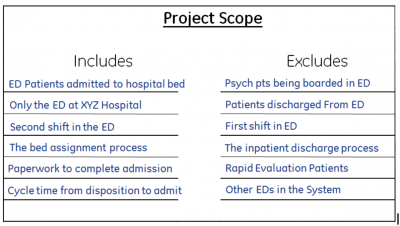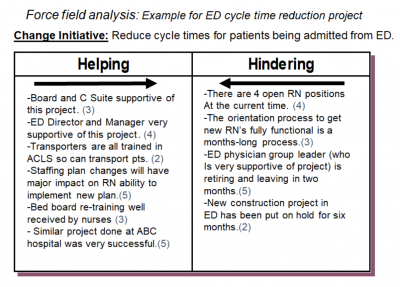
Change Acceleration Process (CAP) is a well-known strategy for quickly implementing organizational change. We will present the elements of CAP, its benefits, and how it might help your organization.
Overview: What Is the Change Acceleration Process?
In 1989-90, GE launched a team-based problem-solving and employee empowerment program called Work-Out.
This approach was modeled after Japanese Quality Circles, which were commonly used then. Work-Out was successful, but GE’s CEO, Jack Welch, was frustrated with the slow speed at which it was being implemented. Welch hired a team of consultants to research best practices for change management in industry and academia.
The result was the Change Acceleration Process, commonly referred to as CAP.
One of the primary insights the consultants gained was that having a strong technical solution to a problem was no guarantee of the project’s success. Failure was often due to cultural and personal issues, not the lack of a technical solution.
This insight resulted in the Change Effectiveness Equation, QxA=E, where the Effectiveness (E) of any project is equal to the Quality (Q) of the technical solution times the Acceptance (A) of the solution by the people involved in the process.
If you have a great technical solution but little buy-in from the people involved, your project will not be successful.
The 7 Elements of the Change Acceleration Process
There are seven elements of CAP. The graphic below defines what they are.

Change Acceleration Process Model
- Leading change: The leadership of the organization needs to consistently show a strong commitment to supporting change. There is a significant risk of failure if the organization lacks strong leadership commitment to the change initiatives.
- Creating a shared need: People must see the need for change for it to be accepted and worked on. Reasons must be compelling and resonate not just for the leadership team but for everyone in the organization.
- Shaping a vision: Leadership must present a clear vision of the impact on the organization after a successful change. The outcome should be clearly understood, have genuine reasons, and be widely accepted.
- Mobilizing commitment: Once the first three steps are in place, momentum needs to be built toward the need for change. It should include engaging, identifying, planning, and analyzing the necessary changes.
- Making change last: The challenge here is how to maintain the gain. This step is about learning from previous mistakes, adjusting the initiative if needed, and transforming the change into how we do things here. All of this will help make the change more permanent and sustain success.
- Monitoring progress: Measuring how the change initiative is progressing, and celebrating when appropriate, will help to cement the change in the organization. Set benchmarks for success, and measure them often and objectively.
- Changing systems and structures: To make the change permanent, the infrastructure must be set up to support it. If your current infrastructure (IT systems, HR policies, organizational design, etc.) is set up to support the previous state of the organization, it must be updated to support the future vision or the organization will not be able to make the change last.
Common Tools Used in CAP
Here are some of the common tools used in the CAP process:
- Includes/excludes chart: Challenges the team to define the boundaries of the project and to clarify and agree on what is included and excluded in the scope of work.
- Process mapping: A graphical representation of the as-Is current state process. The starting process map is usually a SIPOC.
- In/out of the frame: A visual tool analogy of a picture frame. It identifies those aspects of the project in the frame (within the scope of work), out of the frame, or half-in-half-out (debatable or some aspects are partially in the scope of work).
- 15 words: An alignment tool that challenges team members to define the project in specific terms and then check for alignment of definitions. Each team member must write, in 15 words or less, the project definition. Check for agreement to assure team alignment.
- Team charter checklist: Provides a structure for gaining clarity of purpose, individual and team expectations, and scope of responsibilities.
- A.R.M.I. analysis: Helps define the roles of the project’s key stakeholders and their involvement in the project. This is similar to a RACI (responsible, accountable, consultative, informed) diagram.
- A = Approver will approve and make decisions on a variety of issues such as project scope, resources, and ultimately team recommendations for improvement.
- R = ad hoc Resource contributes to the project’s success with process/content expertise.
- M = Member has the critical working knowledge of the problem and/or process. They need to attend team meetings and fully participate in the action items and work plan. They will be the key to successful project completion.
- I = Interested Parties are the key stakeholders who will build the critical mass of stakeholders necessary to ensure success.
Additional Tools
Further analytical tools find use during this process. They are as follows:
- GRPI (goals, roles, processes, interpersonal relationships): A responsibility grid for determining who does what concerning the project action plan.
- Threat vs. opportunity matrix: Frame the need as a threat and opportunity for both the short and long terms.
- Elevator speech: States the need for change and describes the future state. As such, a 90-120-second speech takes place whenever a team member has the opportunity to describe the team’s project to a key stakeholder.
- Force field analysis: Analysis of what will drive or block the project in the long term. By understanding these forces, you can build action plans to close the gap between where you are and where you want to be.
3 Benefits of CAP

GE and many other organizations were successful in implementing CAP. Here are some of the benefits they have for their efforts.
1. Quick and Systematic
The purpose of CAP is to accelerate change in a structured and systematic manner.
2. Engagement
Creating a shared need and shaping a common vision will get everyone on board to support organizational changes.
3. Alignment
It minimizes the effort of getting the organization to understand and align business functions around a specific change.
Why Is CAP Important to Understand?
CAP is a very comprehensive approach to change. Understanding the tools and structure will let your organization embrace change more efficiently and effectively.
Sequential in Nature
The seven steps of CAP build upon each other. As such, you must first establish the common need and vision before embarking upon making any changes.
Importance of People
The Change Effectiveness Equation, QxA=E, emphasizes the fact that without the acceptance of the people in the process. The effectiveness of the change will go down no matter how good your technical solution is.
Leadership Is Crucial
Without the full commitment of senior leadership to the change process, the eventual success of any initiative won’t be effective.
An Industry Example of CAP
A large hospital realized it needed to reduce cycle time in its emergency department (ED) to meet patient’s expectations and competitors’ performance. Their Master Black Belt (MBB), a former employee of GE, suggested they utilize CAP as a method for implementing quick changes.
Below are a few examples of some of the tools in the seven-step CAP. In the end, the project was successful in reducing cycle time by approximately 27%, which improved patient satisfaction and made them very competitive with other local medical facilities.
Note: These charts are from a workshop put on by GE Healthcare.





3 Best Practices When Thinking about CAP
Consider these suggestions when using CAP to make changes in your organization.
1. Get the Right People
Select the right people for the project and be sure they align and understand the structure and rigor of CAP.
2. Don’t Take Shortcuts on Steps 2 and 3
Creating a shared need and vision is critical to establishing alignment with team members and the goal of the project.
3. Communicate Frequently
Have frequent communication with the leadership of the organization and any key stakeholders who could impact your project, either positively or negatively.
Other Tools and Concepts
CAP isn’t the only tool when it comes to transforming your organization. Learning how to effectively use the SIPOC diagram when planning your processes can help everyone stay on the same page while visualizing everything that needs to happen.
Further, you might want to avoid some of the common mistakes that arise when using SIPOC. Our cautionary guide goes over some of the common pitfalls and how to rectify them before embarking on creating your own SIPOC diagram.
Recap of CAP
CAP is a seven-step process to help organizations quickly and efficiently implement change. As such, It requires organizational and leadership commitment, common purpose and alignment, mobilization of the organization’s resources, and possible changes in infrastructure to support changes.